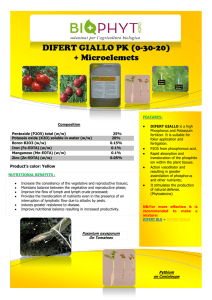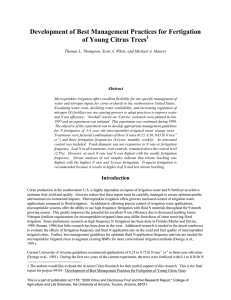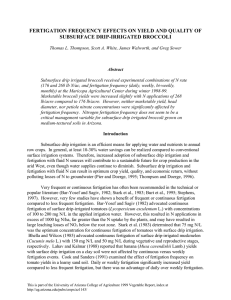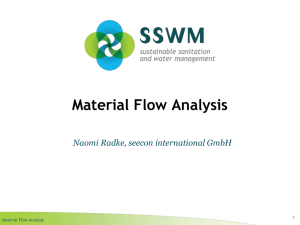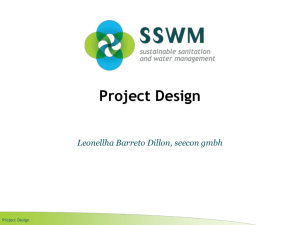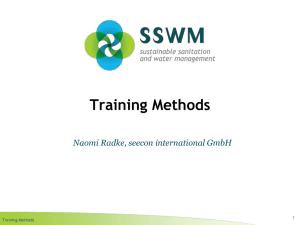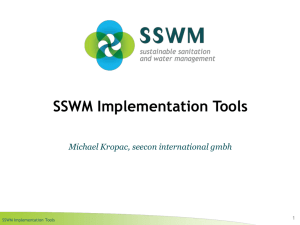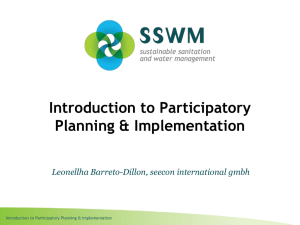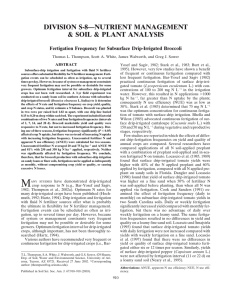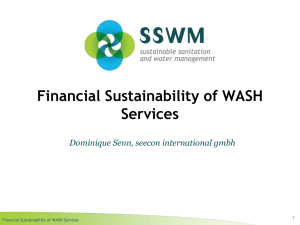What is fertigation? - Sustainable Sanitation and Water Management
advertisement
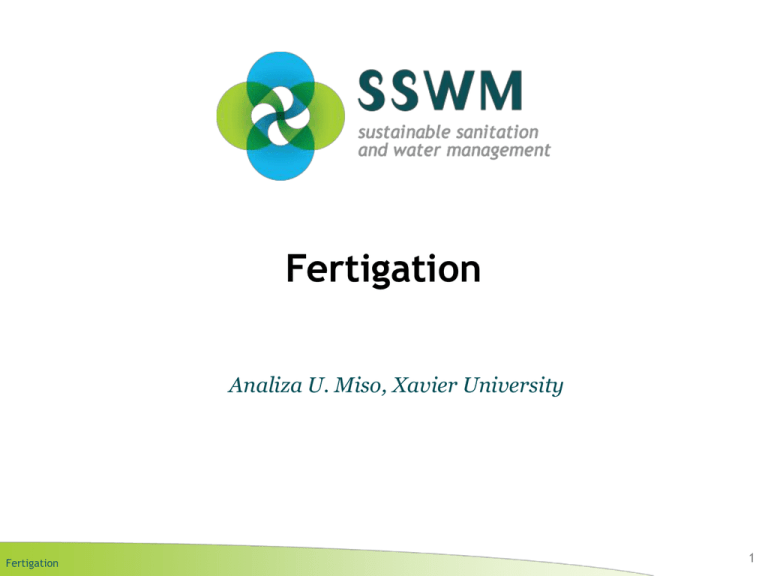
Fertigation Analiza U. Miso, Xavier University Fertigation 1 Find this presentation and more on: www.sswm.info. Copyright & Disclaimer Copy it, adapt it, use it – but acknowledge the source! Copyright Included in the SSWM Toolbox are materials from various organisations and sources. Those materials are open source. Following the opensource concept for capacity building and non-profit use, copying and adapting is allowed provided proper acknowledgement of the source is made (see below). The publication of these materials in the SSWM Toolbox does not alter any existing copyrights. Material published in the SSWM Toolbox for the first time follows the same open-source concept, with all rights remaining with the original authors or producing organisations. To view an official copy of the the Creative Commons Attribution Works 3.0 Unported License we build upon, visit http://creativecommons.org/licenses/by/3.0. This agreement officially states that: You are free to: • Share - to copy, distribute and transmit this document • Remix - to adapt this document. We would appreciate receiving a copy of any changes that you have made to improve this document. Under the following conditions: • Attribution: You must always give the original authors or publishing agencies credit for the document or picture you are using. Disclaimer The contents of the SSWM Toolbox reflect the opinions of the respective authors and not necessarily the official opinion of the funding or supporting partner organisations. Depending on the initial situations and respective local circumstances, there is no guarantee that single measures described in the toolbox will make the local water and sanitation system more sustainable. The main aim of the SSWM Toolbox is to be a reference tool to provide ideas for improving the local water and sanitation situation in a sustainable manner. Results depend largely on the respective situation and the implementation and combination of the measures described. An in-depth analysis of respective advantages and disadvantages and the suitability of the measure is necessary in every single case. We do not assume any responsibility for and make no warranty with respect to the results that may be obtained from the use of the information provided. Fertigation Find this presentation and more on: www.sswm.info. Contents 1. Concept 2. How it can optimize 3. Operation and maintenance 4. Applicability 5. Advantages and disadvantages 6. References Fertigation 3 Find this presentation and more on: www.sswm.info. 1. Concept What is fertigation? • Fertigation means irrigation plus fertilization which can be done through buried or surface drip-lines or through sprinklers. • Recent technological developments in the drip and micro-irrigation methods have accelerated the adoption of fertigation for a wider range of crops, including fruit trees. • “To reduce dependence on freshwater and maintain a constant source of irrigation water throughout the year, waste waters of varying qualities can be used in agriculture. • Generally, only waters that have had secondary treatment (i.e. physical and biological treatment) should be used to limit the risk of crop contamination and the health risk to workers. Fertigation 4 Find this presentation and more on: www.sswm.info. 1. Concept Example of fertigation Source: TILLEY et al. (2008) Source: http://www.niab.org.pk/SoilScience_files/fertigation.jpg Fertigation 5 Find this presentation and more on: www.sswm.info. 2. How it can optimize SSWM Implementation and use of Fertigation can help in optimizing your local water management and sanitation system and make it more sustainable by: •Minimizing competition between agriculture and urban areas for high quality freshwater supplies, particularly in arid, semi-arid and densely populated regions, will increase the pressure on this resource. •Providing readily available nutrients found in greywater/wastewater to the plants •Providing a relatively safe way of discharging pre-treated wastewater into the environment Fertigation 6 Find this presentation and more on: www.sswm.info. 3. Operation and Maintenance • Fertigation with the use of irrigating/microirrigating technologies must be regularly check since they are susceptible to clogging. • The management of risk is facilitated by conducting an analysis of the entire production cycle from waste generation to consumption of the product. • Knowledge of the system is then used to identify health protection measures that can reduce health risks at different points, in order to arrive at the agreed health-based targets. • Public health policies for interventions should ensure that the most cost-effective measures are applied in specific contexts. • Guidelines for the use of excreta and greywater in agriculture exist from the WHO (2006) Fertigation 7 Find this presentation and more on: www.sswm.info. 4. Applicability • Fertigation does not provide adequate treatment for raw wastewater and this technology should only be considered for discharging pre-settled wastewater or greywater as well as rainwater. • Fertigation is suitable for both rural and peri-urban areas • Fertigation is very much suited in areas where fresh water is very scarce, like urban areas, particularly in arid, semi-arid and densely populated regions, will increase the pressure on this resource. Fertigation 8 Find this presentation and more on: www.sswm.info. 5. Advantages and Disadvantages Advantages: Disadvantages: • Minimizing soil compaction by avoiding heavy equipment traffic through the field to apply fertilizers •Fertigation using dripi-irrigation or micro-irrigation is very sensitive to clogging • Reduced energy demand •May require expert design and installation • Reduced labor input careful regulation and monitoring of nutrient supply •Not all parts and materials may be available locally • Even distribution of nutrients throughout the root zone • application of nutrients matched in amounts and timing to the plant nutrient requirements (BURT et al. 1998) Fertigation 9 Find this presentation and more on: www.sswm.info. 6. Reference BURT, C., O’CONNOR ., K. & RUEHR, T. (1998): Fertigation. Irrigation Training and Research Center. California Polytechnic State Univ, San Luis Obispo, CA.p. 295. TILLEY, E., LÜTHI, C., MOREL, A., ZURBRÜGG, C. & SCHERTENLEIB, R. (2008): Compendium of Sanitation Systems and Technologies, Switzerland, Swiss Federal Institute of Aquatic Science (EAWAG) & Water Supply and Sanitation Collaborative Council Fertigation 10 “Linking up Sustainable Sanitation, Water Management & Agriculture” SSWM is an initiative supported by: Compiled by: Fertigation 11

